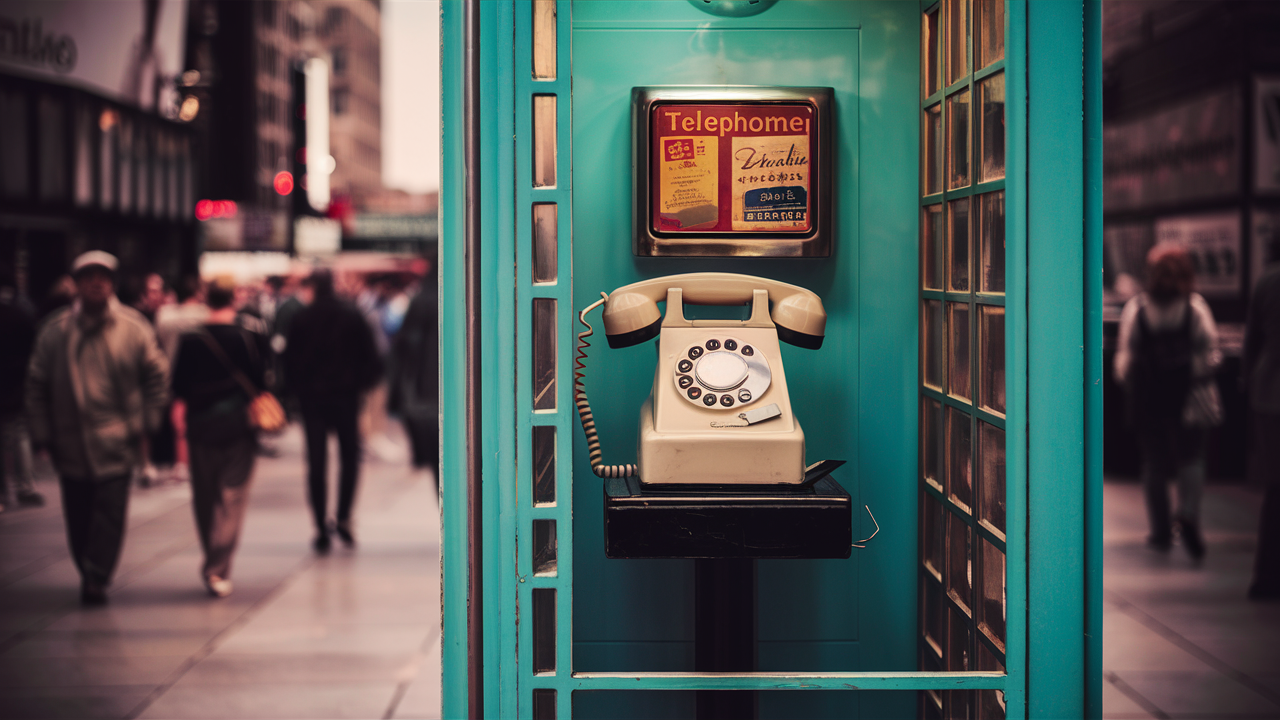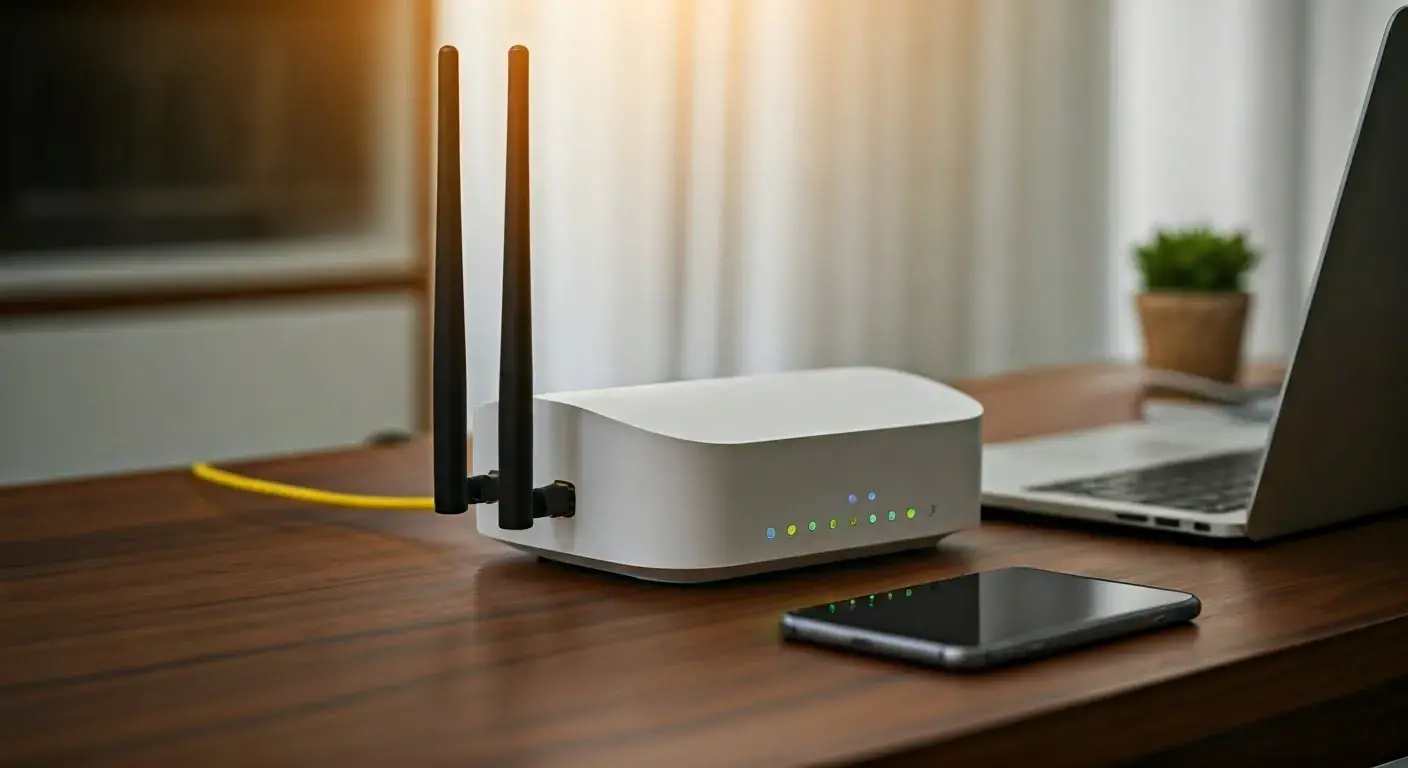Can you still get an old fashioned landline?

The Enduring Appeal of Traditional Landlines
The question "Can you still get an old fashioned landline?" echoes in the minds of many, especially as our lives become increasingly dominated by mobile devices and digital communication. While the landscape of telecommunications has dramatically shifted, the answer is a resounding yes. Traditional landlines, often referred to as Public Switched Telephone Network (PSTN) or Plain Old Telephone Service (POTS), are not extinct. They continue to offer a unique set of benefits that many consumers and businesses still value in 2025.
Are Traditional Landlines Truly Gone?
It's easy to assume that with the ubiquity of smartphones and the rise of Voice over Internet Protocol (VoIP) services, traditional landlines have faded into obsolescence. Many people recall a time when every home had a rotary or push-button phone tethered to a wall jack, providing the primary means of communication. The advent of mobile phones, and subsequently smartphones, has undeniably altered how we connect. However, the narrative of the landline's demise is largely exaggerated. While their market share has shrunk significantly, they remain a viable and often preferred option for a substantial segment of the population. The infrastructure for traditional landlines, built over decades, is still in place in many areas, and providers continue to offer these services, albeit with evolving technologies and pricing structures.
Understanding Phone Service Evolution
To fully grasp the current status of landlines, it's crucial to understand the technological shifts that have shaped the telecommunications industry. The way we communicate has undergone a rapid and profound transformation over the past few decades, moving from analog to digital, from wired to wireless, and from circuit-switched networks to packet-switched ones. This evolution has introduced new possibilities and conveniences but has also led to the phasing out of older technologies, or at least a significant reduction in their prominence.
The Rise of VoIP
One of the most significant disruptors to traditional landlines has been the widespread adoption of Voice over Internet Protocol (VoIP). VoIP technology converts analog voice signals into digital data packets that can be transmitted over the internet. This offers several advantages, including lower call costs, especially for international calls, and enhanced features like video conferencing, call forwarding to multiple devices, and integration with other online services. Companies like RingCentral, Dialpad, and Nextiva have made VoIP a staple for businesses, offering scalable and feature-rich communication solutions. Even for residential users, services like Ooma and Vonage provide VoIP-based home phone solutions that often mimic the functionality of a traditional landline but are delivered over an internet connection. This shift has meant that many households that might have once subscribed to a traditional landline are now opting for VoIP, seeing it as a more modern and cost-effective alternative. The perceived benefits of VoIP, such as flexibility and advanced features, have led many to believe that the traditional landline is no longer necessary.
Mobile Dominance
The smartphone revolution has been another major factor in the decline of traditional landlines. With a mobile phone, individuals can make and receive calls, send texts, access the internet, and use a myriad of applications from virtually anywhere. For many, a smartphone has become their primary, and sometimes only, phone. The convenience of having a single device for all communication needs is a powerful draw. Statistics from 2025 indicate that mobile phone penetration continues to be exceptionally high globally, with many individuals owning multiple devices or subscribing to plans that offer unlimited calling and data. This pervasive mobile usage has led to a perception that a separate home phone line is redundant. Why pay for a landline when your mobile phone can do everything and more? This sentiment has driven many households to cut the cord on their traditional landlines, further contributing to the perception that they are becoming obsolete.
Getting a Landline Today: The Options
Despite the rise of newer technologies, the term "landline" itself has become somewhat fluid. When people ask if they can still get an "old fashioned landline," they often mean a fixed, reliable phone line that connects to their home or business. Fortunately, there are still several ways to achieve this, with varying degrees of "old fashioned" and technological underpinnings.
Traditional POTS Service
For those who truly want the "old fashioned" experience, Plain Old Telephone Service (POTS) is still available in many areas. This is the original copper-wire telephone network that has been in place for over a century. POTS lines are known for their reliability, as they don't depend on local power or internet connectivity to function during an outage (though the phone set itself might require power if it's a cordless model). Major telecommunications companies, often the descendants of the original Bell System monopolies, still offer POTS service. However, it's important to note that the availability of new POTS installations can be declining in some regions, particularly in urban areas where infrastructure is being upgraded to fiber optics. Providers are sometimes hesitant to install new POTS lines due to the aging infrastructure and the increasing cost of maintaining it. If you're looking for a pure POTS line, it's best to inquire directly with your local incumbent telephone company.
VoIP as a Landline Alternative
While we discussed VoIP as a disruptor, it's also important to recognize that many VoIP services are designed to replicate the landline experience. These services allow you to use a traditional-looking phone handset connected to a small adapter (ATA - Analog Telephone Adapter) that plugs into your router, or they can use IP phones that look and function like standard office phones. The key difference is that the calls are routed over your internet connection. Services like Ooma, Vonage, and even some business-focused VoIP providers offer plans that provide a dedicated home or business phone number, allow you to make and receive calls, and often include features like voicemail, caller ID, and call waiting. For many users, these VoIP services provide all the functionality they associate with a landline, but with the added benefits of lower costs and more advanced features. They offer a modern take on the concept of a fixed line, often at a more competitive price point than traditional POTS.
Fiber Optic Phone Service
As telecommunications companies upgrade their networks to fiber optics, traditional phone service is often bundled with these new infrastructure deployments. Fiber optic networks transmit data using light signals, offering much higher speeds and greater reliability than older copper lines. When you subscribe to a fiber internet package, phone service is frequently offered as an add-on or bundled service. This "digital phone service" is technically a form of VoIP, but it's delivered over a dedicated fiber optic line, which can offer superior quality and reliability compared to VoIP services that rely on a shared or less robust internet connection. Companies like Verizon (FiOS), AT&T (Fiber), and others are increasingly offering these integrated services. While not strictly "POTS," they provide a fixed, reliable line for your home or business that functions much like a landline, often with enhanced capabilities.
Why People Still Choose Landlines in 2025
Despite the prevalence of mobile phones and the allure of VoIP, there are compelling reasons why individuals and businesses continue to opt for landline services. These reasons often stem from a need for reliability, simplicity, specific functionalities, or a desire for a more controlled communication environment.
Reliability and Emergency Services
Perhaps the most significant advantage of traditional POTS landlines is their unparalleled reliability, especially during power outages and emergencies. Unlike VoIP or mobile phones, which rely on local power and potentially overloaded cellular networks, POTS lines are powered directly from the telephone company's central office. This means they can often function even when the electricity is out, making them a critical lifeline for emergency calls (911/999/112). In 2025, this remains a paramount concern for many, particularly those in areas prone to severe weather or with unreliable power grids. The ability to reliably contact emergency services without worrying about battery life or internet connectivity is a major selling point. Furthermore, Enhanced 911 (E911) systems are typically more accurate with landline locations than with mobile phones, which can sometimes provide a general vicinity rather than a precise address. This enhanced location accuracy is vital for first responders.
Simplicity and Familiarity
For many, particularly older adults or those who are not technologically inclined, the simplicity of a traditional landline is a significant draw. There are no apps to update, no batteries to charge, and no complex menus to navigate. You pick up the receiver, dial the number, and connect. This straightforward operation eliminates the frustration that some individuals experience with more advanced technologies. The tactile feel of a physical phone and the familiar dial tone provide a sense of comfort and ease. This familiarity extends to the device itself; many people have a preferred style of landline phone that they find ergonomic and easy to use. The lack of complexity makes it an accessible communication tool for everyone in the household, regardless of their technical proficiency.
Dedicated Home Line
A dedicated home line offers a clear separation between personal and professional life, or between different family members. For individuals who work from home, a separate business landline number can lend an air of professionalism and help manage incoming calls. It prevents work-related calls from interrupting personal time or vice versa. For families, a landline can serve as a central communication hub, a number that children can use to call home, or a reliable way for older family members to stay in touch. It provides a stable, predictable point of contact that isn't tied to an individual's mobile device, which can be lost, stolen, or out of service. This dedicated line ensures that important calls are always received and that there's a consistent number to share with others.
Business Needs
While VoIP has become dominant in the business world, traditional landlines still hold relevance for certain types of businesses. Some legacy systems, such as alarm systems, fax machines, and certain point-of-sale (POS) terminals, are designed to work with POTS lines. While many of these systems are being updated or replaced, there are still businesses that rely on them. Additionally, some small businesses, particularly those operating in very basic settings or in areas with unreliable internet, might prefer the simplicity and perceived reliability of a traditional landline for their primary business number. The cost of a basic POTS line can also be attractive for businesses that have minimal calling needs and don't require the advanced features of VoIP.
Digital Detox and Privacy
In an era of constant connectivity and digital overload, some individuals are actively seeking ways to disconnect and reclaim their personal space. A traditional landline can be a part of this "digital detox" strategy. By having a phone line that is solely for voice calls and isn't integrated with a smartphone or computer, users can create a more controlled communication environment. This can lead to fewer distractions, less exposure to online solicitations, and a greater sense of privacy. For those concerned about data collection and online tracking, a traditional landline offers a level of anonymity that is harder to achieve with internet-based communication methods. It provides a direct, analog connection that is less susceptible to the digital footprints left by online activities.
Providers and Availability in 2025
The availability of traditional landline services in 2025 varies significantly depending on your geographic location and the infrastructure present in your area. While the telecommunications landscape is consolidating and evolving, several types of providers still offer landline solutions.
Major Telecom Companies
The primary providers of traditional POTS landlines are typically the large, incumbent telecommunications companies. These are often the companies that evolved from the former Bell System operating companies in the United States, or their equivalents in other countries. Examples include AT&T, Verizon, Lumen Technologies (formerly CenturyLink), and Frontier Communications in the US, and similar national carriers elsewhere. These companies maintain the legacy copper-wire infrastructure in many regions and continue to offer POTS service. However, their focus is increasingly shifting towards fiber optic deployments and mobile services, so new POTS installations might be limited, and they may be encouraging customers to migrate to newer technologies. It's essential to contact your local major telecom provider directly to inquire about POTS availability at your specific address.
Local Providers and Cable Companies
Beyond the major national carriers, local telephone companies (often referred to as CLECs - Competitive Local Exchange Carriers) and cable television providers also offer phone services. Cable companies, such as Comcast (Xfinity Voice), Spectrum, and Cox, often provide "digital phone" services that are essentially VoIP delivered over their cable internet infrastructure. While not strictly POTS, these services offer a fixed line and function similarly to a landline for most users. They are often bundled with internet and TV packages, making them a cost-effective option for many households. Local telephone companies might also offer competitive landline services, sometimes focusing on specific regions or niche markets. Investigating these options can reveal more localized and potentially more affordable solutions.
Rural Areas and Special Cases
In rural or underserved areas, traditional POTS landlines can sometimes be the only reliable option for voice communication, especially where broadband internet is unavailable or inconsistent. In these regions, the incumbent local telephone company often has a regulatory obligation to provide basic telephone service. Satellite internet can provide connectivity, but it's often not ideal for real-time voice communication due to latency. Therefore, for many residents in remote areas, a POTS landline remains their primary and most dependable phone service. For specific business needs, such as fax lines or alarm systems, specialized providers might offer dedicated analog lines even in areas where standard POTS service is being phased out.
The Process of Getting a Landline
Obtaining a landline service in 2025 is generally straightforward, but the exact steps can vary depending on the type of service you choose and your provider. Whether you're opting for traditional POTS, a VoIP service, or a bundled digital phone line, a systematic approach will ensure a smooth transition.
Research and Compare
The first and most crucial step is to research and compare the available options in your area. Identify which providers serve your address and what types of phone services they offer. Consider your needs: Do you require the absolute reliability of POTS for emergency services? Are you looking for the most cost-effective solution with advanced features, making VoIP a better fit? Or is a bundled digital phone service from your cable provider the most convenient? Look at pricing plans, monthly fees, installation costs, and any long-term contract requirements. Websites that offer comparison tools for telecommunications services can be invaluable here. Don't forget to read customer reviews to gauge service quality and reliability.
Installation and Setup
Once you've selected a provider and a service plan, the next step is installation. For traditional POTS service, a technician may need to visit your home to activate the line and ensure the wiring is functional. This might involve checking existing phone jacks or installing new ones if necessary. For VoIP services, the setup is often much simpler. If you're using an ATA adapter, you'll typically receive the device by mail and simply need to plug it into your router and connect your existing phone. IP phones usually require minimal setup beyond connecting them to your network. If you're opting for a bundled digital phone service from a cable or fiber provider, the installation will likely be part of the overall service setup for your internet or TV, and a technician will handle the phone line activation.
Porting Your Number
A common desire when switching to a new phone service, including a landline, is to keep your existing phone number. Fortunately, number porting is a standard practice across most telecommunications services. You will typically initiate this process with your new provider. They will guide you through the necessary forms and information required to transfer your number from your old carrier. It's important to note that you should *not* cancel your old phone service until the number porting is complete, as this can result in the loss of your number. The porting process can take anywhere from a few days to a couple of weeks, depending on the carriers involved. Your new provider will manage the technical transfer, ensuring a seamless transition with minimal interruption to your service.
Cost Considerations for Landlines in 2025
The cost of obtaining and maintaining a landline in 2025 can vary significantly based on the type of service, provider, and included features. Traditional POTS lines, while reliable, are often the most expensive option on a monthly basis. Expect to pay anywhere from $25 to $50 or more per month for basic POTS service, not including long-distance charges, which can be substantial if not bundled. Installation fees for POTS can also range from $50 to $150 or more, depending on whether new wiring is required. VoIP services present a more budget-friendly alternative. Basic residential VoIP plans can start as low as $10 to $20 per month, often including unlimited local and sometimes long-distance calling within a country. Advanced business VoIP plans with more features can range from $25 to $75 per month per line. Installation for VoIP is usually minimal, often involving self-setup with provided equipment, or a small fee for a technician if needed. Bundled digital phone services from cable or fiber providers can be very competitive, especially when combined with internet and TV packages. These bundles can sometimes offer phone service for as little as $10 to $30 per month as part of a larger package. However, it's crucial to scrutinize these offers, as the "introductory" pricing might increase significantly after an initial contract period. Always factor in potential long-distance charges, activation fees, and equipment rental costs when comparing prices. For businesses, the cost can scale with the number of lines and features required, but VoIP generally remains more scalable and cost-effective than traditional PBX systems and POTS lines.
The Future of Traditional Phone Lines
The future of traditional copper-wire POTS landlines is, in many ways, a story of gradual transition rather than abrupt disappearance. Regulatory bodies and telecommunications companies worldwide are increasingly discussing and implementing plans to sunset the old copper networks. The maintenance costs of these aging infrastructures are high, and the demand for higher bandwidth and more advanced services is pushing investment towards fiber optics and 5G wireless technologies. In the United States, the Federal Communications Commission (FCC) has been involved in discussions about transitioning from POTS to next-generation networks. While a complete shutdown isn't imminent everywhere, the trend is clear: POTS is being phased out. This doesn't mean that fixed-line communication is ending, but rather that it will be delivered through newer, more capable technologies like VoIP over fiber or advanced wireless networks. For consumers and businesses, this means that while you can still get a "landline" today, the underlying technology might be different from the copper-wire POTS of yesteryear. VoIP services, whether standalone or bundled with fiber internet, are becoming the de facto standard for fixed-line communication. These services offer greater flexibility, advanced features, and often better call quality. The "old fashioned" landline, in its purest POTS form, will likely become increasingly scarce, particularly in urban and suburban areas. However, the need for a reliable, fixed phone number that isn't tied to a mobile device will persist. Therefore, services that emulate the landline experience, delivered via modern IP-based networks, will continue to be available and will evolve to meet future communication demands. The concept of a "home phone" or "business line" will endure, even if the wires beneath the street are no longer made of copper.
In conclusion, the question "Can you still get an old fashioned landline?" is answered with a confident "yes," but with important nuances. While the classic copper-wire POTS service is becoming less common and is slated for eventual sunsetting, the functionality and reliability associated with a landline are readily available through various modern channels. VoIP services, delivered over your internet connection, and digital phone services bundled with fiber or cable packages offer robust alternatives that often come with enhanced features and competitive pricing. The enduring appeal of landlines—their reliability, simplicity, and the dedicated line they provide—ensures their continued relevance. For those prioritizing emergency service accessibility, a simple user experience, or a distinct communication channel, exploring these modern landline alternatives is a wise choice. Research your local providers, compare the available options, and you'll find that a dependable fixed-line phone service is still very much within reach in 2025.





